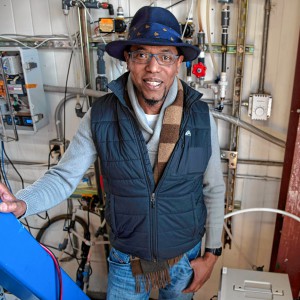2022 marked state’s sixth warmest year on record
| Published: 01-18-2023 4:40 PM |
If you felt last year was historically warm, new data from the University of Massachusetts confirms that feeling as 2022 marked the sixth-warmest year and second-warmest summer on record in the state.
With statewide temperatures averaging 50.3 degrees — 3.4 degrees above the 20th-century mean — 2022 tied 2016 as the sixth-warmest year in Massachusetts since 1895, with only January’s average temperature registering below normal, according to data from UMass’ Climate System Research Center.
“It’s a continuation of this multidecade trend we’ve been seeing,” said Michael Rawlins, the center’s associate director. “It’s not surprising.”
What did surprise Rawlins, however, was February through December were warmer than average during a La Niña year. La Niña, according to the National Oceanic and Atmospheric Administration, is the cooling phase of a recurring climate pattern in the Pacific Ocean that typically brings cooler temperatures and shifts precipitation patterns. Its counterpart is El Niño and the two shift back and forth every three to seven years on average.
“Global average temperatures are often a lot colder when we have La Niña,” Rawlins said. “The fact that Massachusetts, the contiguous U.S., and global temperatures are fifth or sixth warmest in a La Niña year tells us the Earth’s energy imbalance and warming will continue, and likely be even warmer still when it eventually transitions to neutral and El Niño.”
In terms of precipitation, numbers were scattered across the board, with the ninth-wettest February and the 10th-driest summer on record. Rawlins said a warmer climate can bring more extreme weather, while also drastically changing in the variability.
“The trend toward more extreme precipitation events in a wet climate like the Northeast are something we need to prepare for as we adapt to these climate changes,” Rawlins said.
A recent example of this, although not local, are the torrential downpours that pummeled California last week.
Article continues after...
Yesterday's Most Read Articles
“What they’re seeing there could in fact be a manifestation of the warming climate with increasing amounts of moisture in the atmosphere,” Rawlins said.
A key point to watch, Rawlins said, is the continued warming of the region’s winters across all of New England.
“Winters with so many days above freezing would not be recognizable to generations that lived in the late-1800s when record keeping began in earnest,” Rawlins said. “Particularly, year after year, we’re losing the frozen season. It’s contracting and becoming less intense.”
Warmer temperatures can also bring increased precipitation and both factors combined can upend recreational opportunities like skiing or agricultural industries such as maple syrup production or other farming practices, according to NOAA’s Fourth National Climate Assessment, which was published in 2018. The Fifth National Climate assessment is expected to be published in the fall.
“Studies suggest that northeast agriculture, with nearly $21 billion in annual commodity sales, will benefit from the changing climate over the next half-century due to greater productivity over a longer growing season,” the report reads. “However, excess moisture is already a leading cause of crop loss in the Northeast. Recent and projected increases in precipitation amount, intensity and persistence indicate increasing impacts on agricultural operations.”
Rawlins said there is cause for alarm in looking through this data. While one year represents a snapshot in terms of climate — projections are usually made with decades’ worth of data — it shows on a small scale of what the environment is going through, especially if the data continues to trend in the warming direction.
“Like many, I’m concerned that we’re going to see additional warming, even if we should see reductions in emissions here in the next 10 or 20 years. We’ll see additional warming that we’re committed to, based on our current greenhouse gas concentrations in our atmosphere.” Rawlins said. “I’m concerned that we need to commit even further to reductions in greenhouse gas emissions.”
Chris Larabee can be reached at clarabee@recorder.com or 413-930-4081.
 William Strickland, a longtime civil rights activist, scholar and friend of Malcolm X, has died
William Strickland, a longtime civil rights activist, scholar and friend of Malcolm X, has died Advancing water treatment: UMass startup Elateq Inc. wins state grant to deploy new technology
Advancing water treatment: UMass startup Elateq Inc. wins state grant to deploy new technology New Realtor Association CEO looks to work collaboratively to maximize housing options
New Realtor Association CEO looks to work collaboratively to maximize housing options Northampton man will go to trial on first-degree murder charge after plea agreement talks break down
Northampton man will go to trial on first-degree murder charge after plea agreement talks break down 
